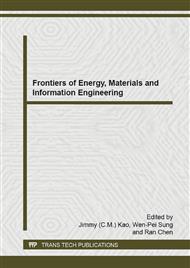p.1526
p.1529
p.1533
p.1538
p.1541
p.1545
p.1549
p.1553
p.1558
LED Roadway Lighting Control Scheme Based on TALQ Protocol
Abstract:
This paper introduces the importance of LED roadway lighting control. The existing problems of LED roadway lighting control are shown, and the issues in outdoor lighting standard is described as well. As a result, a new and authority outdoor lighting control standard named TALQ was established. Comparing with the other solutions, the solution of TALQ standard is more flexible and easier to solve the existing problems in current outdoor lighting control. The advantages of LED roadway lighting control based on TALQ protocol are shown in an application case.
Info:
Periodical:
Pages:
1541-1544
Citation:
Online since:
October 2014
Authors:
Price:
Сopyright:
© 2014 Trans Tech Publications Ltd. All Rights Reserved
Share:
Citation:


